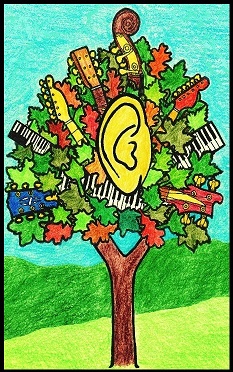 I’m using “church” as a general term for wherever people worship, not to distinguish from synagogues, mosques, ashrams, or other places of worship.
I’m using “church” as a general term for wherever people worship, not to distinguish from synagogues, mosques, ashrams, or other places of worship.
Church bands run the gamut from chamber groups performing Bach in evening attire on Sunday mornings, to the free-form spontaneity of a snake-handling tent revival. However, most praise and worship (P&W) groups focus on the kind of anthemic four-chord power ballads that are popular on “Contemporary Christian” radio.
Church bands can be incredibly valuable for people who want to improve their performing skills. You have an organized setting, in a safe facility, run by presumably sane people. Church bands are one of the only settings where younger or less experienced musicians can play side-by-side with older or more experienced musicians, in a structured environment, on a regular basis, and all for free. It can be one of the best platforms for novice semi-pros.
I say “can be,” because church bands are not always happy places. Too many P&W groups descend into panic and pitfall. (Lam. 3:47 NAS) P&W groups are usually run by young people. They can be high-drama, high-maintenance situations. (Talk about “grieving the Holy Spirit.”) When they’re run by amateurs, they can become models of inefficiency, and sink-holes for time. You can also run into problems when people are trying to attain some kind of inner experience, or state of mind, while trying to play music at the same time.
One of the most common problems is guitar players who aren’t sure about their chord roots. Many amateur guitar players can’t play barre chords, so they use a capo (clamp) to play in odd keys. That solves the problem of playing the chords, but the guitar player might have a problem reading the chords. The easiest solution is for the guitar player to pencil-in the names of the chord shapes with the capo above the chord changes in the chart. If the director pencils-in those changes on his copy too, then he can mediate between the players with capos and the other musicians.
Even when they’re well-organized, when people with different experience-levels are thrown together, misunderstandings are possible. This is one place where you can see the Modern/Classical Disconnect in its fullest expression. Sometimes things get personal. That’s too bad, because there are usually simple solutions, if the P&W director knows how to deal with them. It’s one thing when it’s a case of someone who doesn’t have the technical ability to play. Any problem other than that, like being unsure about your chord roots, probably has a workable fix.
These types of things shouldn’t come as a surprise when they occur. There’s a core repertoire of P&W favorites that have been recorded and scored in a variety of different keys. One of the main qualifications for a good P&W director is being able to take a chart in one key, a recording in another key, and create a new chart in a third key, with transposed copies for guitars with capos in a fourth key. One of the main jobs is just juggling keys and keeping track of the arrangements.
I was playing for one church group where they gave us MP3 copies, and lead sheets written in staff for piano and vocal. The bass player played the left hand of the piano part. The lead sheet format took up three or four pages per song. In many of these songs, the individual parts arn’t that difficult, but the verse/chorus/bridge arrangements can be complicated.
I rewrote my chord charts, and got the other cues about how to play my guitar part from the MP3. By rewriting my chart, I had a chart with only the information that I needed. Each song was condensed down to only one or two pages, so I didn’t have to turn pages.
I never understood how you are supposed to turn pages while you’re performing. We did it in orchestra by having two people reading from the same stand, so only one had to drop their part to turn the page.
The players following lead sheets had to flip pages, sometimes three or four times in one song. Sometimes the song had a signe two pages back, or a coda two pages ahead. Because they are all reading the same poorly-formatted sheet music, they all had to flip pages at more or less the same time. They would all be playing, when one person would quickly reach up and flip a page. A second later, the other players followed suit. I think some guys in the back pews were betting on who would flip next. I’ll put five bucks on the bass player to show at three-to-one.
© 2019, 2020 Greg Varhaug